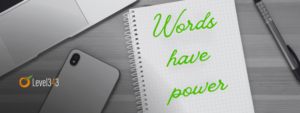Digital marketing – it’s a dynamic world full of change, isn’t it? Yet, the power of effective landing pages remains unparalleled. It’s the magical place where a visitor’s curiosity transforms into actionable interest.
What you’ll learn in this guide is what it takes to make a landing page not just good, but great. We explain the difference between landing pages and product pages and discuss the importance of good content. Are you a startup honing its digital presence or a seasoned marketer seeking to enhance your conversion strategies? This article is your roadmap to mastering landing pages that engage, excite, and convert.
Let’s dig in!
Table of contents
You’ve spent hundreds, perhaps thousands of dollars on professional services, and they’ve redesigned your entire site. You now have a beautiful design. Your content looks great, your links are climbing nicely, and you’re ranking for some of your terms at number three. Top o’ the world, ma!
So why are you getting low, or no, Return on Investment (ROI)?
It could very well be your landing pages.
“Wait,” you say. “I don’t have any landing pages.”
Surprise!
What is a Landing Page?
While many think of landing pages as those focused-on-conversion, single-purpose-with-testimonials, no-menu pages as landing pages, the reality is a lot less (and more) complicated. The reality is that every site has a landing page, every page on your site is a landing page, and every page could convert.
A “landing” page is very simply “the page your visitor lands on.” However, as simple as that concept is, it gets much more complex, very quickly. Because there are the landing pages on your site, and then there are the campaign landing pages on your site. A campaign landing page is developed for one purpose, and focused on a singular objective. “Buy Now,” for example, or “Subscribe to the Newsletter.”
I’d like to challenge you to think of every page like this: created for a specific purpose and focused on a singular objective. That objective could be to gather leads, promote a special offer, or introduce a new product. However, it could also be to build brand awareness, such as with “About the Company” pages, build authority with “Meet the Leadership,” or build trust with “10 Ways to XYZ in Your Industry.”
The Purpose of Landing Pages
The primary purpose of a landing page is to drive action. It guides visitors toward a specific goal. This goal could be signing up for a newsletter, registering for a webinar, or making a purchase.
By providing a direct path to this goal, landing pages streamline the user experience. In turn, this makes it easy for visitors to take the desired action without the distractions of a full website.
Reference vs Transactional
It’s important to distinguish informational pages from product/service pages. While both are crucial in e-commerce and online marketing, they serve different purposes. A product or service page is part of a standard website that offers detailed information about a particular product. It’s typically designed for browsing and exploration.
A landing page is more focused and goal-oriented, built to convert a visitor into a lead or customer. Landing pages often use persuasive elements like compelling copy, engaging visuals, and a clear call-to-action (CTA).
Importance of High-Quality Content on Landing Pages
High-quality content is the lifeblood of an effective landing page. It’s not just about what you say, but how you say it.
The content needs to resonate with your target audience, addressing their needs, pain points, and interests. It should be concise yet compelling, persuasive yet believable. With the right content, a landing page can captivate visitors, build trust, and convert interest into action.
A landing page is a focused, purpose-driven tool to help you achieve your marketing objectives. Understanding its function and significance is the first step in leveraging its power to drive conversions and boost your digital marketing results.
Landing Page Design
Design isn’t just about aesthetics; it’s about function, especially when it comes to landing pages. The design of your landing page can significantly impact its effectiveness in converting visitors. Let’s explore the key elements and considerations that go into designing an impactful landing page.
What Goes Into a Landing Page?
Typically, a great landing page includes several key components:
- Headline: This is often the first thing a visitor sees. It’s easy to sensationalize a search snippet title and then have something that doesn’t match once they get to the page. It happens all the time, but it shouldn’t.
No matter what link your visitors are clicking, whether it’s the SERPs, PPC or an ad placement somewhere, make sure your headline coincides, so they know they’re in the right place. - Visuals: High-quality media, such as an attractive hero image or videos. Don’t put pictures on a page just to have pictures.
At the very least, make sure any photos go along with the content. Use them to carry the eye down the page, not just to bring color and jazz to a boring piece of copy. - Copy: More and more people are becoming scanners. “Read?” they ask. “I don’t have time to read!” This is why copywriters use bullet points (or short sentences and short paragraphs): to keep the content flowing and scannable.
However, instead of bullet points, you can also use the sub-headings as would-be bullet points for the scanners and add in depth content for the readers. Two birds with one stone. - Call-to-Action (CTA): A clear, standout button or link prompting the visitor to take the desired action.
- Lead Capture Forms: Have you ever had a form ask you to share information that made you wonder why they needed it? After all, you’re just downloading a pdf, right? Why do they need your address and the name of your first child (or dog)?
The next time you make a form for visitors to use, remember that uneasy feeling. If you don’t need the information, don’t ask for it. There’s time to gather more information later, once your mailing list is already put together.
Important Design Considerations
When designing a landing page, keep the following in mind:
- Simplicity: A clean, uncluttered design helps focus the potential customer’s attention on the key message and CTA.
- Branding: Ensure the design aligns with your brand’s look and feel for consistency across all your marketing materials.
- Navigation: Use your navigation menu as what it sounds like – a map to reach the most important pages of your site. Make sure the pages that end up on it are absolutely necessary to have.
- Loading Time: Optimize images and elements to ensure the page loads quickly, reducing bounce rates.
- Responsiveness: The page should look and function well on different devices, especially mobiles.
Design Dos and Don’ts
Dos:
- Use colors that contrast well to make key elements like CTAs stand out.
- Use legible fonts and adequate spacing to enhance readability.
- Conduct A/B testing to see which design elements resonate best with your audience.
Don’ts:
- Don’t overload the page with too much information or too many different visuals.
- Don’t use generic stock photos that don’t add value to your message.
- Don’t forget to optimize for mobile devices, which make up a significant portion of web traffic.
A well-designed landing page is a perfect blend of form and function. It must be visually appealing to grab attention and well-structured enough to guide visitors smoothly toward the desired action. By focusing on these design elements, you can create a landing page that looks great and performs well in converting visitors into leads or customers.
Crafting Effective Landing Page Copy
The heart of a high-converting landing page lies in its copywriting. It’s the way you use words to inform, persuade, and convert your audience. Effective copywriting involves understanding your audience’s needs and speaking directly to them in a way that resonates and compels action.
What to Consider for Content Development
When developing content for your landing page, consider the following:
- Benefit-focused vs. Feature-focused: Emphasize how your product or service can solve problems or improve your customer’s life (benefits) rather than just listing its characteristics (features).
- Customer-centric vs. Company-centric Language: Speak to your audience’s interests and needs. Instead of focusing on what your company does, center the narrative around how the customer benefits.
- Active vs. Passive Language: Use active voice to create a sense of immediacy and engagement. For example, “Get your free trial now” is more compelling than “A free trial is available.”
- Deciding the Page Length: The length should align with your offer’s complexity. More straightforward offers can have shorter pages, while more complex ones might need more detailed content.
7 Copywriting Best Practices for Landing Pages
Building a good landing page takes more than striking a few persuasive words together. It’s an art that requires a blend of strategy, psychology, and creativity. These practices ensure your content captures attention and motivates action, ultimately driving conversions.
1. Clarity above all
Your message should be crystal clear. Avoid jargon or complex language that might confuse your audience. The goal is to communicate the value proposition succinctly and effectively.
2. Craft a compelling headline
We mentioned this before, but it’s critically important, so we’ll mention it again. Your headline should grab attention and clearly indicate the value of what you’re offering. It’s often the make-or-break element that decides whether visitors stay or leave.
Examples of potential headlines:
- “Discover Anxiety Relief in Just 5 Minutes a Day”
- “Reduce Your Cloud Expenses by Half or More”
- “The Quickest Path to Piano Mastery”
3. Use persuasive and emotional triggers
“Power words” evoke emotion or a sense of urgency. Phrases like “Transform your life today,” “Discover the secret to…” or “Limited time offer” can motivate action.
4. Keep a consistent brand voice
The tone and style of your landing page copy should align with your overall brand. This consistency helps in building trust and recognition among your audience.
5. Keep it concise and scannable
Use short paragraphs, bullet points, and headers to make the content easy to scan. Most online readers skim, especially through landing page content, so getting your point across quickly is crucial.
You can clarify the offer with bullet points. Provide a concise explanation of the core unique selling proposition. List out 3-5 main features or advantages of the service or product on offer.
Example bullet points:
- 24/7 accessibility to 5,000+ video lessons
- Comprehensive tutorials for beginners
- Fresh content updated weekly
- Tools to monitor practice progress
- Money-back satisfaction assurance
6. Optimize CTAs focused on conversion
CTAs are pivotal in guiding visitors toward taking action. Make sure you prominently display the primary call-to-action above the fold. The CTA copy should unequivocally point to the next step.
Use action-focused language like “Start Today” or “Register Now”. Calls-to-action should be visually distinctive with contrasting colors. Scatter secondary text CTAs and CTA buttons further down the page to keep the engagement going.
7. Use social proof
To build credibility and trust, incorporate testimonials, endorsements, or customer case studies. Real-life examples and success stories can significantly influence decision-making.
These best practices are designed to guide you in creating landing page content that engages, informs, and encourages visitors to take the desired action. By applying these principles, you can enhance the impact of your landing pages and drive better conversion results.
Landing Page Optimization
Optimizing your landing page is crucial for maximizing its effectiveness. This involves fine-tuning various elements to ensure your page attracts visitors and compels them to take action. Let’s explore the key aspects of optimization for landing pages.
Initial Optimization Before Publishing
Before your landing page goes live, there are several factors to consider:
- SEO Elements: Ensure your page is optimized for search engines. This includes using relevant keywords, optimizing meta tags and descriptions, and ensuring fast load times.
- Mobile Responsiveness: With the increasing use of mobile devices, your landing page must perform flawlessly across all screen sizes.
- User Testing: Conduct user testing to gather feedback on the design, content, and overall user experience. This can highlight areas for improvement.
- Load Speed: Optimize images and scripts to ensure your page loads quickly. Slow loading times can lead to high bounce rates.
Using Analytics to Refine for Better Performance
Once your landing page is live, analytics play a crucial role in ongoing optimization:
- Traffic Analysis: Monitor where your visitors come from and how they interact with your page. This information can help you tailor your marketing strategies.
- Conversion Rates: Keep track of your conversion rates. Understanding what works and what doesn’t is key to improving your landing page.
- A/B Testing: Regularly test different landing page elements (like headlines, images, and CTAs) to see what resonates best with your audience.
- User Behavior Insights: Tools like heat maps can provide insights into how users interact with your page, highlighting which parts they focus on.
Metrics to Monitor and Measure
Focus on metrics that directly relate to your landing page’s objectives. Some essential metrics include:
- Bounce Rate: The percentage of visitors who leave without taking action.
- Conversion Rate: The percentage of visitors who complete the desired action.
- Time on Page: How long visitors stay on your landing page.
- Click-Through Rate (CTR) for different elements, especially CTAs.
Updating Based on the Data
Use the data from your analytics to make informed decisions:
- Refine Copy and Design: Experiment with different approaches if certain elements aren’t performing well.
- Update Offers: Keep your promotions fresh and relevant to maintain visitor interest.
- Improve User Experience: Make adjustments based on user feedback and behavior patterns.
Optimization is an ongoing process. By continually analyzing, testing, and refining your landing page, you can significantly enhance its effectiveness, leading to higher conversion rates and better ROI. Remember, a successful landing page is constantly evolving to meet the changing needs and behaviors of its audience.
Landing Page Builders
Choosing the right landing page builder is pivotal in crafting an effective online presence. These tools offer the convenience and flexibility to efficiently create, optimize, and maintain landing pages. Let’s delve into the key aspects of selecting a landing page builder and some notable examples in the market.
Features to Look for in Landing Page Builders
When evaluating landing page builders, consider these features:
Professionally Created Templates: A platform should have a collection of professionally designed templates. These templates should look good and be optimized for quick loading and high performance.
Easy Customization: While templates offer a great starting point, customization is key to making your landing pages unique and aligned with your brand. The platform you choose has to simplify the customization process. You should be able to tailor your landing pages to your specific needs without the need for advanced coding skills.
Mobile Compatibility: Responsive landing pages are essential for reaching a wider audience. This is a crucial factor in search engine rankings, as search engines prioritize mobile-friendly content.
A/B testing: This allows you to compare two page versions to see which performs better. A/B testing provides valuable insights into what visitors want for their content and which version they respond to better. In this way, it guides you to make data-driven decisions rather than use guesswork.
Payment Gateway Support: This feature is essential for securely processing online transactions. You want it to be seamless to enhance the user experience for buyers. This is crucial for maintaining trust and reliability in e-commerce interactions.
Simplified Domain Setup: This feature streamlines the process of connecting your landing pages to a custom domain. A simple setup allows you to easily integrate your landing pages into your website. You want it to look like one seamless site, and your domain setup makes sure you show a cohesive, professional presence.
Tool integration: Being able to integrate with marketing tools means a more seamless marketing campaign. It lets you easily sync with email campaigns, analytics, and other digital marketing strategies. This unified approach to your marketing efforts allows for more effective tracking, analysis, and engagement with your audience.
Builder Examples
There are literally hundreds of builders. Some are free, some are extremely pricey. Some have robust offerings, while others do one thing really, really well. Others, well… they’ll just go unspoken.
Below, we’ve listed some of the more popular builders, most of which have a free or trial version:
- Unicorn Platform: Tailored for startups and SaaS, known for its easy-to-use interface and modern design templates.
- Leadpages: Offers comprehensive features and a wide array of templates suitable for various industries.
- Instapage: Renowned for its strong A/B testing capabilities and detailed analytics.
- GetResponse: Integrates extensively with email marketing, beneficial for campaigns focused on lead nurturing.
- Ucraft: Known for its wide range of customization options, allowing for greater creativity in design.
- HubSpot: Ideal for those seeking to integrate landing pages within a comprehensive marketing suite.
- Landingi: User-oriented with impressive analytics capabilities and an intuitive user interface.
Selecting the right landing page builder is about finding the balance between ease of use, functionality, and cost. Consider your specific needs, the scale of your operations, and your team’s technical capabilities when choosing. Choose wisely, because a well-chosen landing page builder can be a game-changer in your digital marketing strategy.
Conclusion
Learning how to create effective landing pages can transform your marketing strategy. In today’s article, we’ve explored the elements that take a landing page from functional to exceptional. Each area, from design to copy to build, plays an important role in crafting a page that resonates with your audience and drives conversions.
We can’t overstate the significance of choosing the right landing page builder. Whether you’re a startup or an established brand, the right builder can simplify your process, enhance your productivity, and ultimately, contribute to your online success.
As you apply these insights and best practices, remember that the world of digital marketing is ever-evolving. Continuous learning, testing, and adapting are key. Your landing pages are not just a static part of your strategy; they are dynamic assets that can grow and evolve with your business. Now, equipped with knowledge and tools, you’re ready to design, write, build, and convert with landing pages that stand out in the digital landscape.
The opportunity for growth and innovation is endless. Your landing pages are more than just a digital space—they are a reflection of your brand’s commitment to meeting your audience’s needs. Here’s to your success in building landing pages that not only capture attention but also convert that attention into meaningful engagement and results.



































